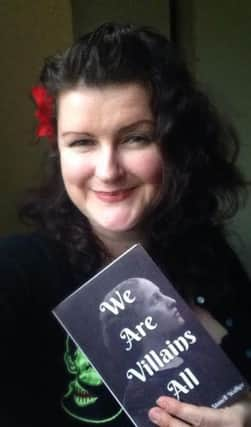Novel published after artist muse mystery solved


In 2015, Kirsty discovered the story of the last days and final resting place of Fanny Cornforth, who is widely regarded as the face of the Pre-Raphaelite style, in the archives of Chichester’s West Sussex Record Office.
Fanny was born in Steyning as the daughter of a blacksmith. After her life as a model and muse, she entered Chichester’s Graylingwell Hospital in 1907 and died in 1909 at the age of 74. She was buried in Chichester Cemetery.
Advertisement
Hide AdAdvertisement
Hide AdSince making this discovery, Kirsty has continued researching art circles in the local area, and has written We Are Villains All, a novel telling the story of a Hampshire based poet ,Maxwell Wainwright, and his friend, photographer Brough Fawley. To prepare for writing this fictional book, Kirsty went to Dimbola Lodge on the Isle of Wight, where famous Victorian photographer Julia Margaret Cameron lived and worked.
In the 1860s, which is one of the time periods in which the novel is set, photography was an emerging art form. While researching at Dimbola Lodge, Kirsty learned the process of wet plate photography, which she has incorporated into We Are Villains All.
Kirsty said: “It was bliss taking photographs in Cameron’s home, and I treasure my wet collodion glass plates. It gave me great insight into the process which I brought to writing the character of Brough, our hero’s friend, not least the smell the whole business had!
“I wrote about the model Fanny Cornforth after I found records of her death at Graylingwell Asyulm. My specialism is 19th century society and the arts, and so I have spent the last 20 years researching different aspects of that period, which gave me plenty to draw on for We Are Villains All.
Advertisement
Hide AdAdvertisement
Hide Ad“With We Are Villains All, I pictured my hero, the Victorian poet Max Wainwright, the very model of a proper and reserved gentleman. If he wrote beautiful poems about love, he was bound to become the object of desire for his female audience. What is something happened to break down those social barriers?”
For more information about We Are Villains All and Kirsty’s other work, visit fannycornforth.blogspot.co.uk.